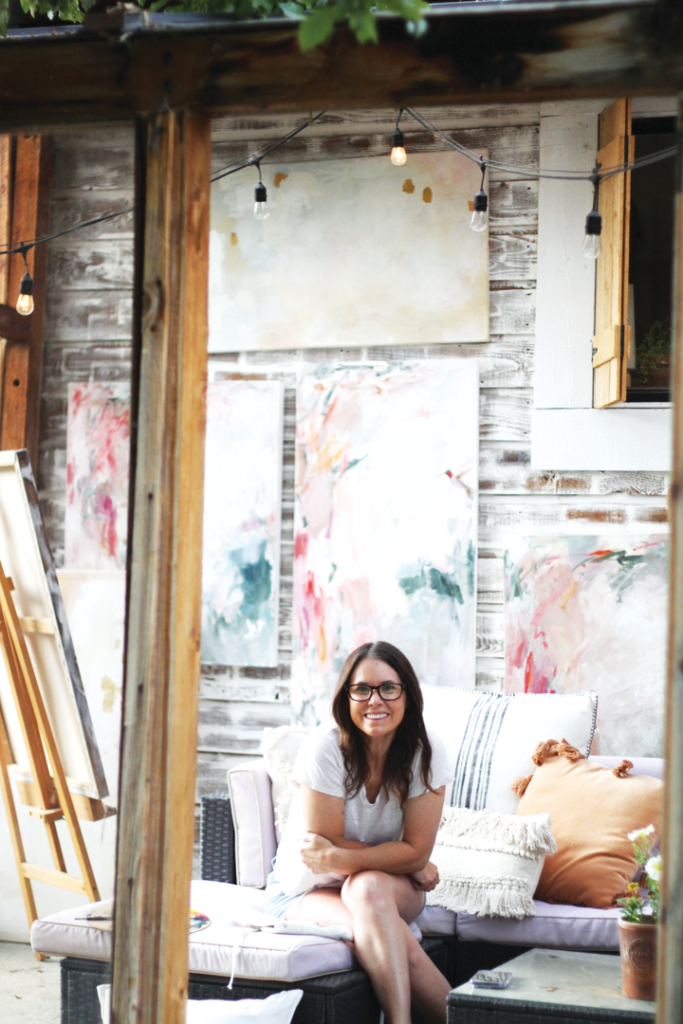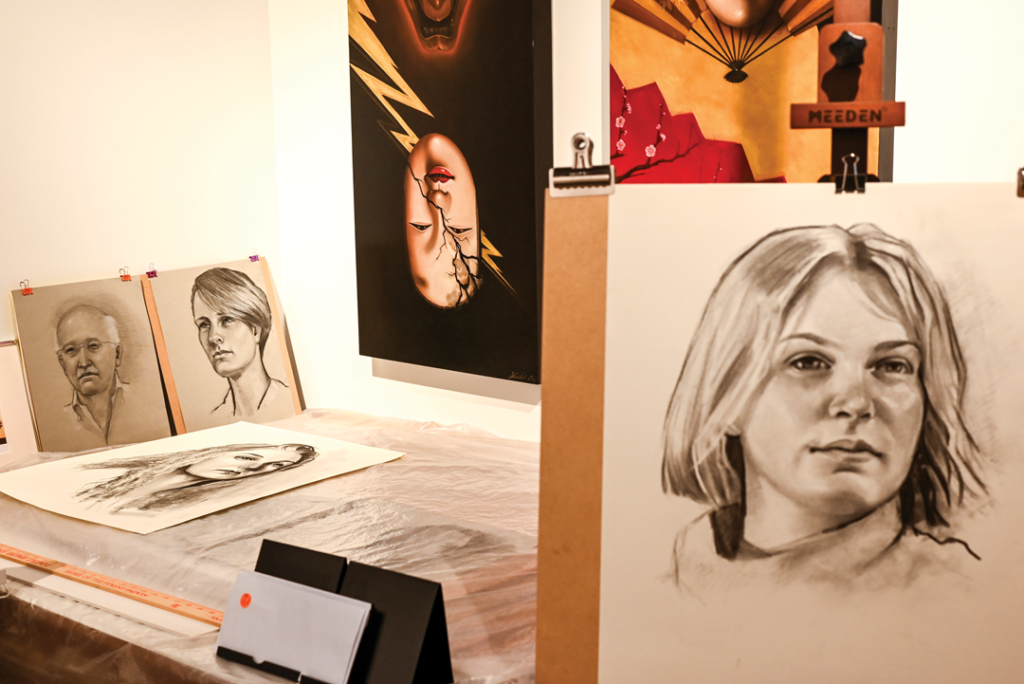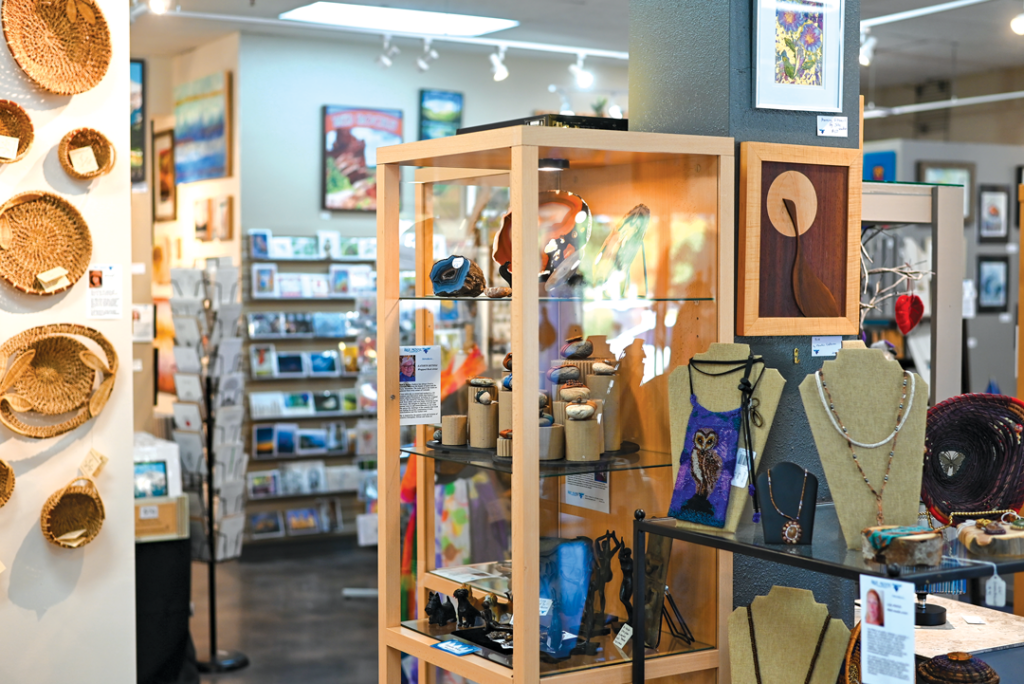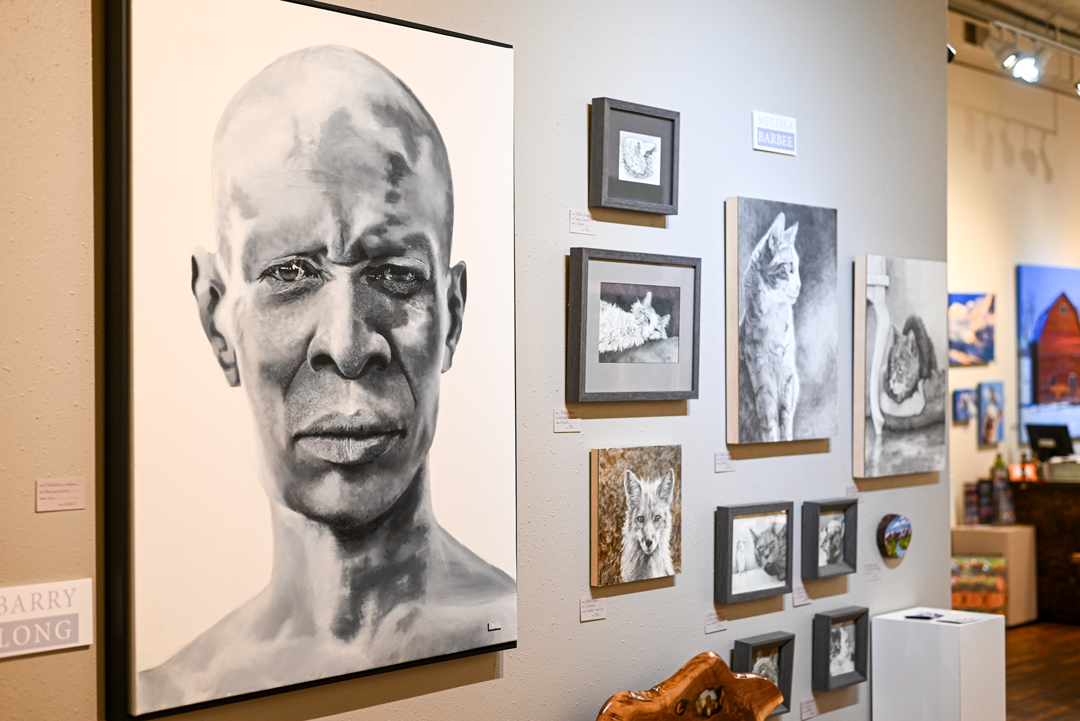If you ask Amanda Faubus why you should buy local art, she can give you five good reasons. The single mother of five turned her painting into a career that affords her the luxury of remaining a stay-at-home mom.
Faubus, of Loveland, who began painting in earnest 10 years ago after a career in interior design, gives another reason that should resonate with art collectors and wannabe art collectors alike. She says buying from an artist means you get to know, and connect with, that individual.

Photo courtesy of Amanda Faubus.
Others in the arts agree. Collecting art is a window into the “vision and passion of the artist, allowing the collector to buy a piece of that journey,” says Craig McKee, co-owner of 3 Square Art in Fort Collins, an art center with a gallery, artist studios and class space.
Art can also bring life to an interior space. It’s a viable investment, too, because original art can gain value that rarely diminishes. But most of all, buying a piece of art makes the soul sing, as every gallery owner and art collector can attest to.
Faubus finds this to be true in the affinity her collectors feel for her art. “When you connect with a piece of art, it’s like it’s speaking the language you’re speaking,” she says.
Still, the new art collector may feel intimidated by the thought of beginning their own collection. It’s hard to know where to find art, how to distinguish the potential investment value of a piece and how to incorporate it into your existing decor.
While there are tips and tricks, the overriding rule from gallery owners is to buy art that you love. If you can do that, the other pieces of the puzzle will fall in line.
Prices aren’t as prohibitive as you think
McKee says that fine art pieces can start as low as $300. Even if that seems like a stretch, there are alternatives that can allow you to collect original art at a much lower price point.

Portraits by Kumiko McKee in her personal studio at 3 Square Art. Photo by Jordan Secher.
One resource is art, craft and gift stores, such as Blue Moose Art Gallery in Fort Collins. Blue Moose carries original pieces from more than 100 artists, ranging from pottery to glass, textiles and wall art, and many are available for under $100. While these may not be fine art pieces that will grow in investment value, they can be originals from emerging local artists who may one day be featured at gallery exhibitions (indeed, some of Blue Moose’s artists have evolved to this level).
Marge Corcoran, one of the gallery’s owners, says the shop lets customers take art home to try it out on their walls and see if it’ll work in their space. However, she cautions against getting too caught up in everything matching. Artwork is supposed to stand out, she says.
“A lot of people will only buy something that matches their current decor,” she says. “I always think, ‘Why?’”
Get to know the galleries and their artists
The best way to find an artist whose work resonates with you is to keep looking, says Billie Colson, owner of Independence Gallery in Loveland. She recommends art walks—First Fridays are a great way to see art in your favorite places—studio tours and local galleries as the best ways to find art you love at a reasonable price.
Colson herself attends studio tours regularly and has gotten some “screaming deals” from artists who are trying to make more room in their studios.
Loveland has the unique advantage of a strong art presence (“Loveland is rich with artists,” Colson says), but it’s more reasonably priced than galleries in, say, Breckenridge. Some of the local artists Colson represents offer their pieces for much less in Loveland, even if they sell for more in other places.

Local artists’ work inside Blue Moose Art Gallery & Gifts. Photos by Jordan Secher.
Colson has owned and operated Independence Gallery for over 17 years and has added to her own collection over time. She has several pieces that have increased in value, but that was never her motivation for purchasing them.
“I still love the pieces I bought when I was just a struggling artist,” she says. “The main reason to buy art is [that] it brings you joy.”
She adds that a piece of art purchased at $1,000 costs less than $2.75 a day—much less than your daily cup of coffee—and that you’ll enjoy it for a long time. Galleries like Independence also offer layaway, so you can pay over time.
Faubus makes another argument for getting to know your local gallery owners: They tend to have a particular style and subject matter that may pique your interest. For example, Faubus paints hummingbirds with gold leaves on canvas. She started painting hummingbirds because she has always had an affinity for them and their movements. That affinity is shared by many of her clients. “It’s almost a spiritual thing,” she says.
Faubus’ collectors are familiar with her style, and many of them have come to know her through Chrystal Decoster, owner of Western Stars Gallery & Studio in Lyons, where her work is on display. When a collector is interested in one of her pieces, Faubus doesn’t take a true commission. Rather, she asks them what size canvas they’re looking for and paints an original piece. If they like it, it’s theirs. If not, she’ll give them first access to the next piece she paints.
“I usually have a large-format painting in the works at all times, and they are almost always sold before I complete them,” Faubus says.
Faubus credits her relationship with Decoster for keeping her current on what buyers are looking for and for matching her with the right collectors. Faubus’ paintings aren’t for everyone; they have to like her style and they have to have the budget. Some of her large pieces go for thousands of dollars.
Investing in original art
Even if you have the first rule down (buy what you love), that doesn’t mean you can’t treat art as an investment. If you have the budget for a painting worth thousands of dollars, it’s important to have a guide through the process. A gallery like 3 Square can help.
The gallery holds six or so juried exhibitions each year, where artists are invited by a panel of jurors to participate. From those shows, a number of artists are invited into 3 Square’s consignment program. These pieces, and others they create, are offered for sale in an online catalogue.
Art collectors can search the catalogue’s database by several criteria, including price, subject matter, configuration and size. They can also work with McKee and his wife and co-owner, Kumiko McKee (a celebrated artist in her own right), to determine the technical ability of emerging artists.
Once purchased, the artwork is then sent to the collector so they can evaluate it for a month and make sure it’s the scale and look they expected. If it isn’t, 3 Square will refund the purchase and take care of the return shipping costs.
In general, McKee says fine art does not depreciate. Respectable galleries work hard to make sure collectors find pieces that’ll be a sound investment, and respectable artists, Faubus says, work to protect their collectors’ investments by refusing to do anything that would devalue the painting, like having prints made and sold to the public for cheap.
Still, McKee warns that collecting art isn’t for the weak. Once you buy that first piece of original art—the one you fell in love with the moment you saw it on display—“buying art becomes something of an obsession,” he says. But it’s one you won’t regret.







